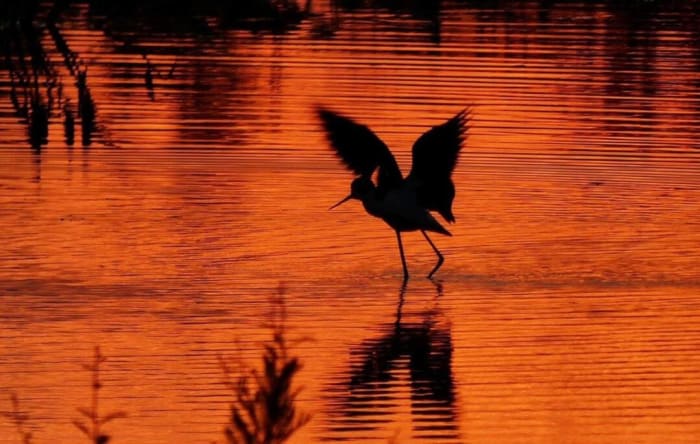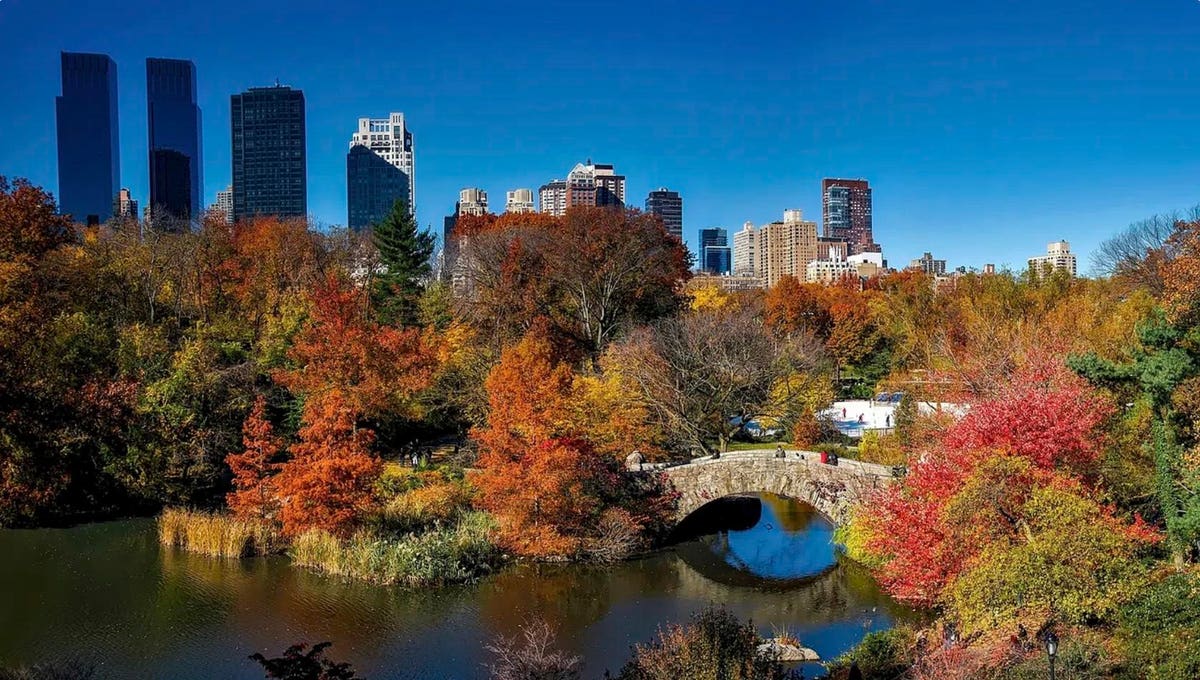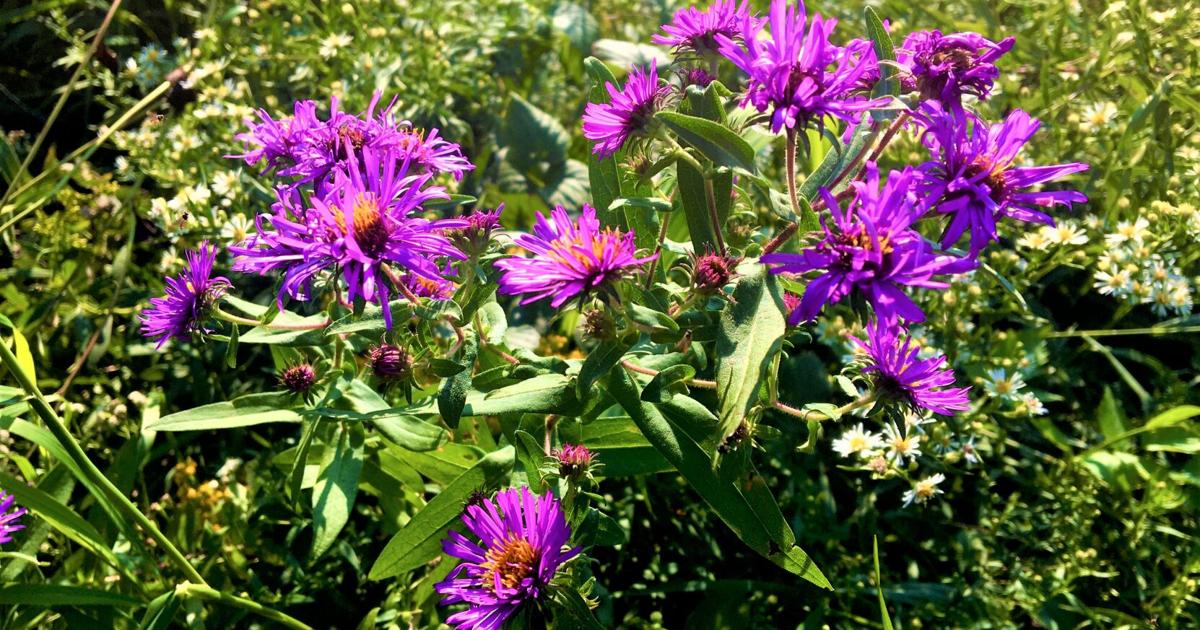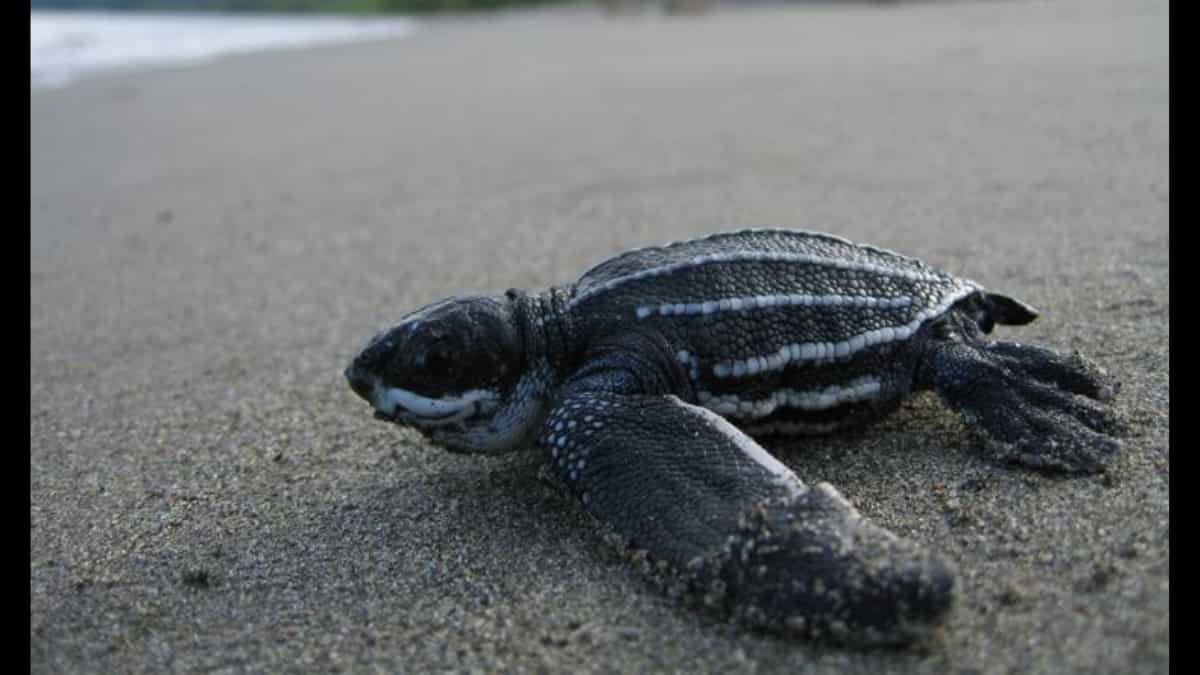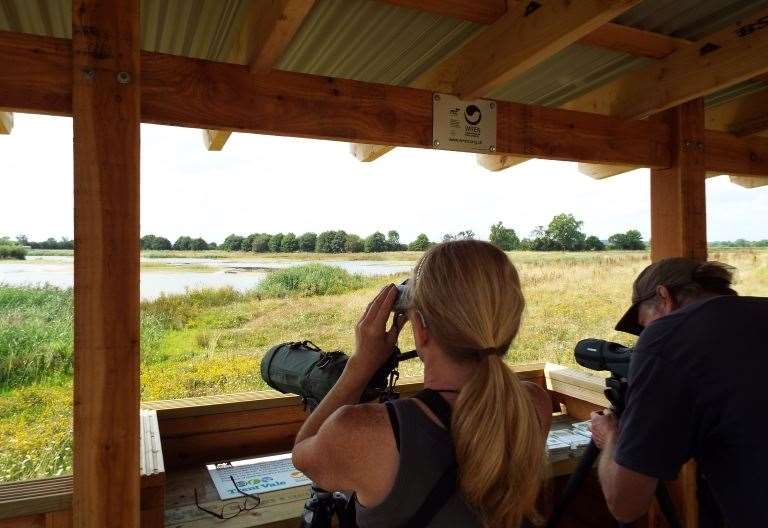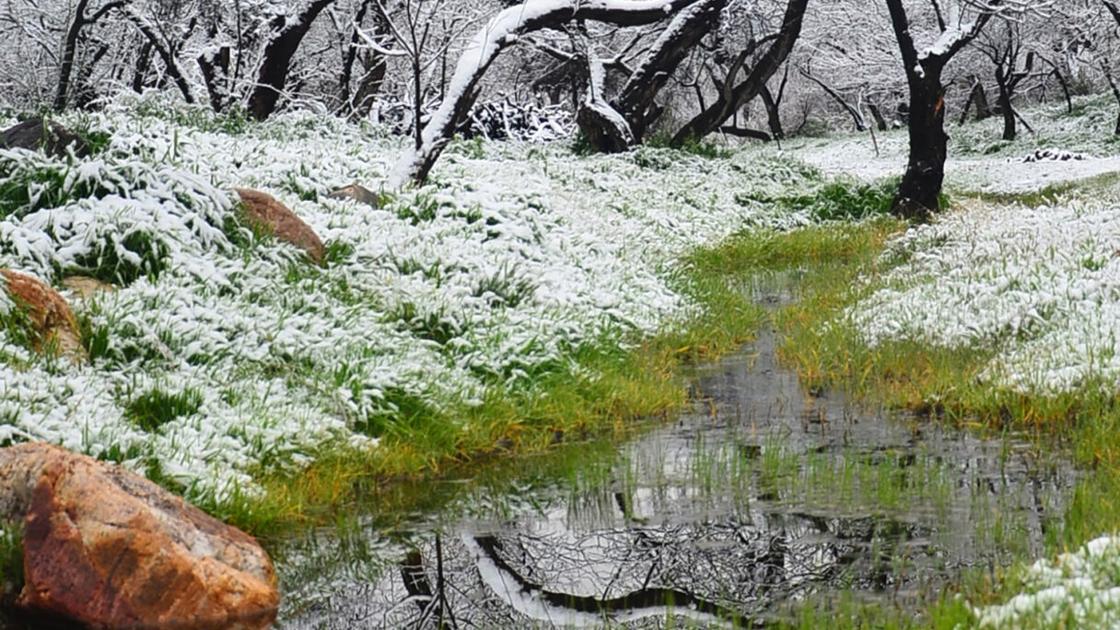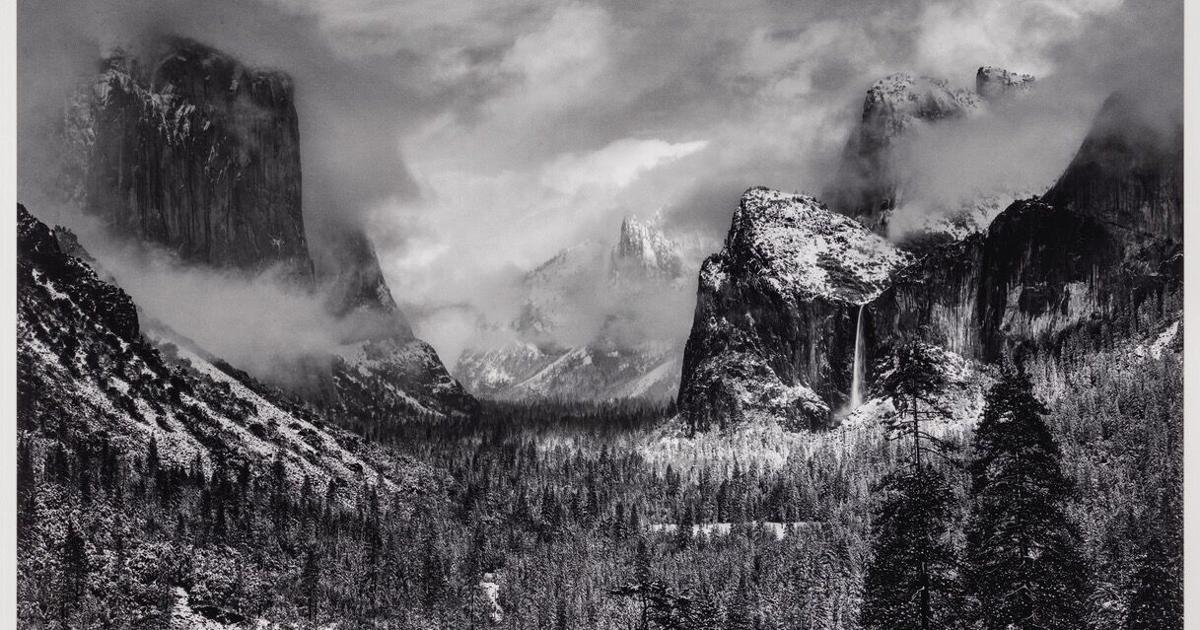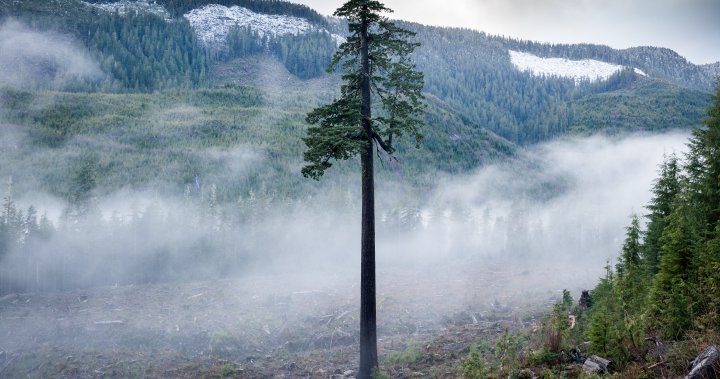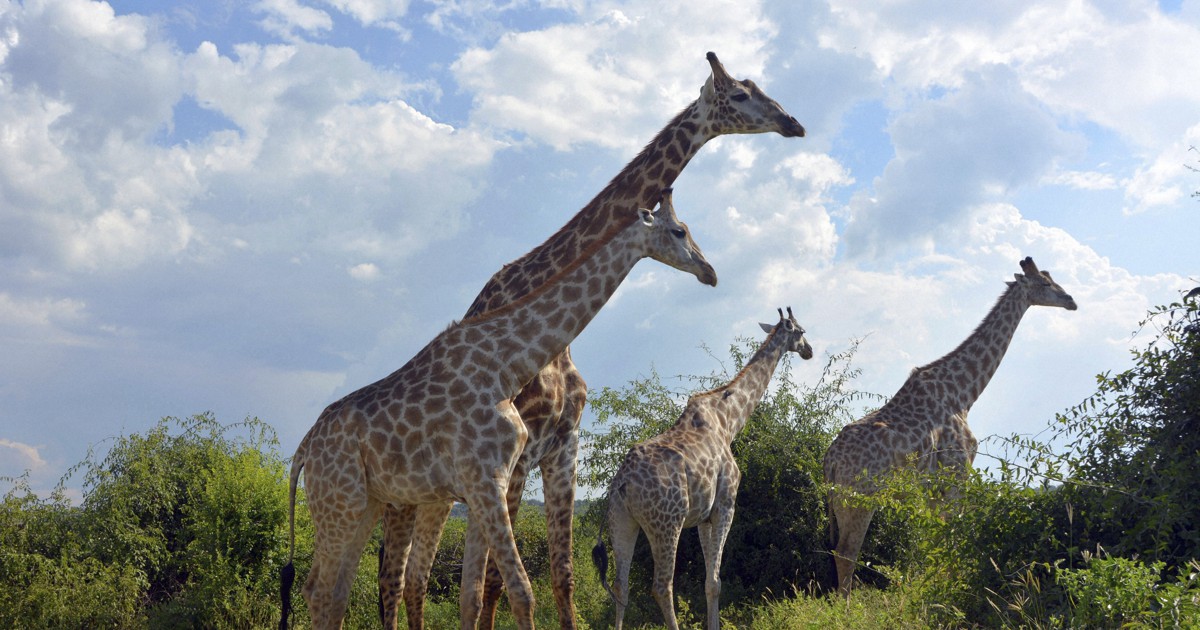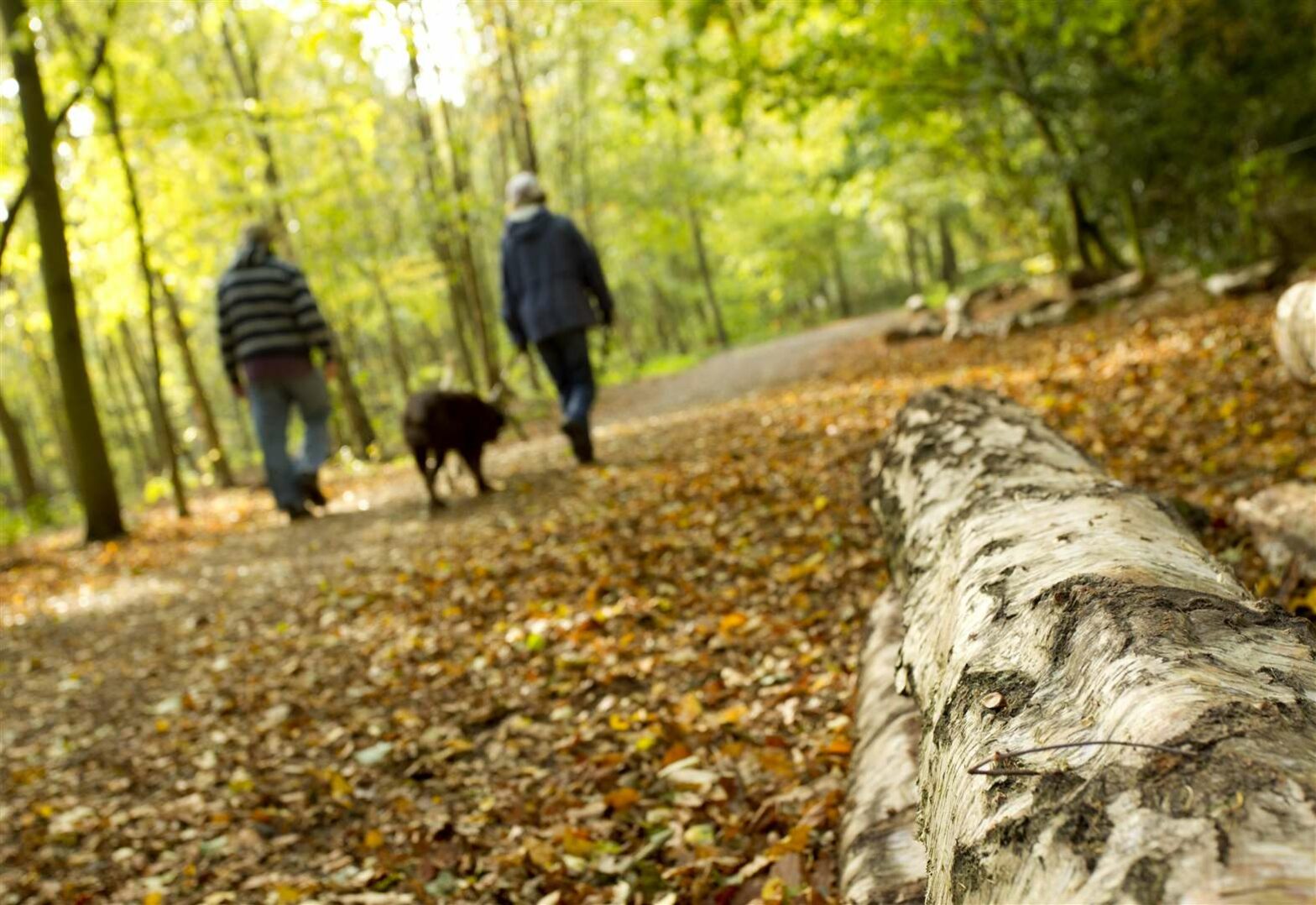Ansel Adams created some of the definitive photographs of the Western American landscape long before climate change threatened to obliterate it forever. Born in San Francisco in 1902, Adams is best remembered for his lush black-and-white pictures of the Yosemite Valley and the Southwest, as well as for his role as an educator who influenced generations of photographers after him.
Now, the de Young — the site of Adams’s first exhibition in 1932 — hosts “Ansel Adams in Our Time,” a major retrospective organized in partnership with the Museum of Fine Arts, Boston, examining the artist’s legacy in relationship with the work of 23 contemporary environmental photographers breaking new ground in the genre.
While the exhibition is full of iconic Adams shots, like “Clearing Winter Storm,” c. 1937, or “Moon and Half Dome,” 1960, both made in Yosemite National Park and many deep cuts, the artist’s work is only a jumping off point.
Richard Misrach’s “Golden Gate Bridge” series, shot from the back porch of his home in the Berkeley Hills, responds directly to Adams’s “The Golden Gate Before the Bridge,” 1932, a breathtaking view of the mouth of the Bay between the Presidio and Marin Headlands – sans bridge. Mark Klett implements collage to converse with Adams and other seminal landscape photographers. The titular view of “View from the handrail at Glacier Point overlook, connecting views from Ansel Adams to Carleton Watkins,” 2003, photographed in color by Klett, is overlaid with collage elements snipped from Adams and Watkins’s earlier black-and-white pictures.
By returning to the source, both artists play to photography’s chronological promise, revealing how much – and how little – has changed.
Others are more concerned with interrogating the act of looking itself, challenging the ubiquity of the White male gaze. Catherine Opie’s landscapes, like “Untitled #1 (Yellowstone Valley),” 2015, respond to and contradict Adams in almost every way: colorful and completely out of focus. Binh Danh’s daguerreotypes of Yosemite, a printing process using a highly copper surface, mirror the viewer in the image.
Both Opie and Dahn’s pictures raise the question of how who looks changes what they see, placing the viewer inside the landscapes they photograph. In fact, the traditional absence of humans from many landscape photographers’ work, including Adams’s, presents a bit of cognitive dissonance: The human footprint is increasingly present in nature, from population growth to climate change, while the particular absence of people in Western landscapes carries colonialist connotations. What you don’t see is just as important as what you do.
Some photographers of Adams’s era attempted more ethnographic projects, like Adam Clark Vroman’s 19th-century playing card sets, illustrated with photographs of Native Americans and sold as souvenirs. Contrast that with Will Wilson’s contemporary portraits of Native Americans like “Nakotah LaRance,” 2012, a young man carrying a portable video game system and a comic book, or Wilson’s own self-portrait “How the West is One,” 2014. Wilson’s diptych represents the artist on both sides: on one, Wilson is dressed in Indigenous cultural garb; on the other, he’s dressed like a cowboy, each staring gravely into his reflection’s eyes. Here, we get a clear view of what’s missing from the supposedly objective presentation of the hauntingly empty landscape.
While Adams’s vision of the West became ubiquitous, it was itself far from objective. Credited with several advancements on the technical side of photography, he studiously crafted many of his images post-production, often combining multiple negatives and using all the darkroom trickery available to him to create impossibly breathtaking views. These technological experimentations were cutting edge at the time, and his work continues to be at home in the company of similarly daring experimenters.
Chris McCaw and Meghann Riepenhoff both play fast and loose with the negative, accentuating the illustrative — even painterly — quality photography can possess. McCaw, who builds his own giant cameras, outfitted with periscope lenses, makes long-exposure photographs in which the trajectory of the sun burns its way across paper negatives over time. Riepenhoff’s pieces are contact prints made by exposing photo-sensitive paper to various natural phenomena, like ice, in addition to light. It’s a level of integration with nature Adams never achieved, embedding nature into their work in an inversion of human’s impact on their
environment.
In one of his rare, urban landscapes, “Housing Development, San Bruno Mountains, San Francisco,” 1966, Adams turns his own lens on the direct impact of development, a zigzag of prefab homes tearing through the hillside. Compared to Adams’s earlier nature shots, this feels like a slap in the face, forcing the viewer to confront the degradation of the landscape. There’s a way in which all of Adams’s photos could be considered depictions of humanity’s impact on the land, and the continued impact on the land is fully displayed by his contemporary counterparts.
Mitch Epstein approaches environmentalism through absurdism. In “Altamont Pass Wind Farm, California,” 2007, the arid wind farm serves as a backdrop for a group of golfers playing on the green course that abuts it. “Signal Hill, Long Beach, California,” 2007, offers a scene of an oil pump wedged between homes in a suburban neighborhood, showcasing the intersection of industrial greed, urban sprawl and willful ignorance. Laura McPhee’s diptych “Early Spring (Peeling Bark in Rain),” 2008, is a view into a dense forest of burned trees, the soot-black bark of each trunk peeling away to uncover new growth beneath. It’s a heartbreaking record of wildfire damage, with a hint of a promising future.
The beauty of the natural world has grown bittersweet. Every picture in the exhibition is gorgeous, sublime enough to teach the Hudson River School a lesson, but they’re hard to look at without recalling recent and increasing environmental travesties in the Bay Area and beyond.
By avoiding the sort of didactics often present in climate activism, Adams and company remind us what we have to lose by showing us why we love it, doing so without sacrificing any of the complex dynamics present in humanity’s relationship to the land. These pictures aren’t for posterity: they’re a reminder that time is running out.
